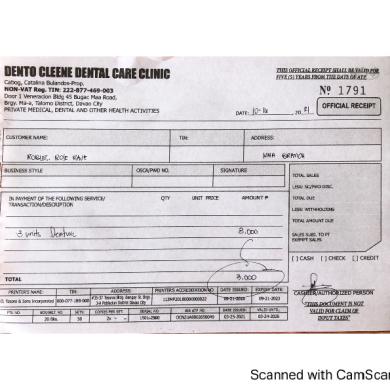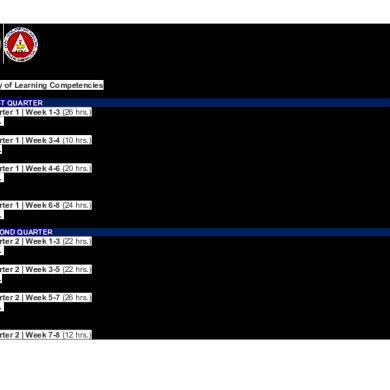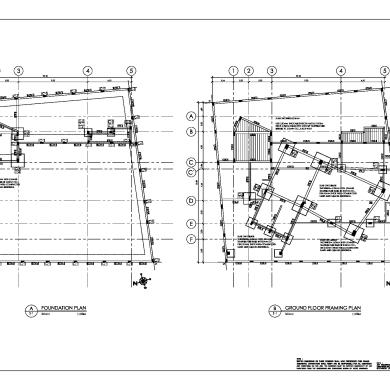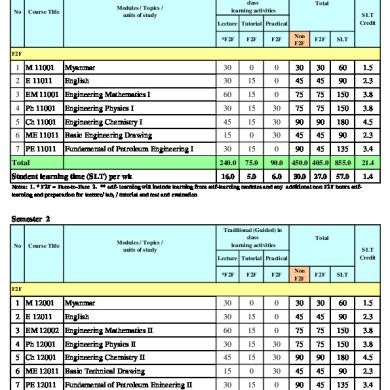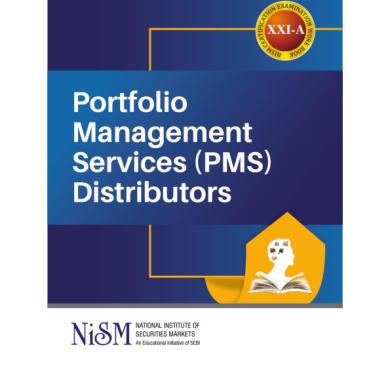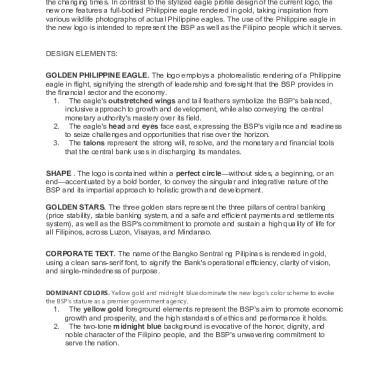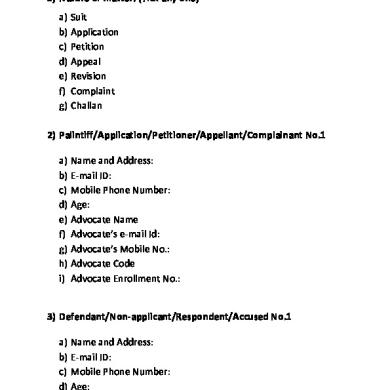* The preview only shows a few pages of manuals at random. You can get the complete content by filling out the form below.
Description
Diagnostic Criteria for Neuropsychological Disorders
Diagnostic Criteria for Neuropsychological Disorders in the 21st Century
Rupal Arora University of Delhi, South Campus Neuropsychology Dr. Gopal Chandra Mahakud December 1, 2021
1
Diagnostic Criteria for Neuropsychological Disorders
2
Diagnostic Criteria for Neuropsychological Disorders
A psychological disorder is a designation often used interchangeably with the terms mental disorder, psychiatric disorder, or mental illness. The “official” term is mental disorder, defined in the latest edition of the American Psychiatric Association's diagnostic manual, the DSM-5. It defines a mental disorder as: "...a syndrome characterized bya clinically significant disturbance in an individual's cognitive, emotion regulation, or behavior that reflects a dysfunction in the psychological, biological, or developmental process underlying mental functioning. Mental disorders are usually associated with significant distress in social, occupational, or other important activities." The DSM-5 also notes that expected responses to a common stressor such as the death of a loved one are not considered mental disorders. The diagnostic manual also suggests that behaviors that are often considered at odds with social norms are not considered disorders unless these actions are the result of some dysfunction. The classification and diagnosis is an important concern for both mental health providers and mental health clients. While there is no single, definitive definition of mental disorders, some different classification and diagnostic criteria have emerged. Clinicians utilize the Diagnostic and Statistical Manual of Mental Disorders, published by the American Psychiatric Association, to determine whether a set of symptoms or behaviors meets the criteria for diagnosis as a mental disorder. The International Classification of Diseases, published by the World Health Organization, is also frequently used.
Diagnostic Criteria for Neuropsychological Disorders
3
A neurological disorder is any disorder of the nervous system. Structural, biochemical or electrical abnormalities in the brain, spinal cord or other nerves can result in a range of symptoms. Examples of symptoms include paralysis, muscle weakness, poor coordination, loss of sensation, seizures, confusion, pain and altered levels of consciousness. There are many recognized neurological disorders, some relatively common, but many rare. They may be assessed by neurological examination, and studied and treated within the specialities of neurology and clinical neuropsychology. Interventions for neurological disorders include preventive measures, lifestyle changes, physiotherapy or other therapy, neurorehabilitation, pain management, medication, operations performed by neurosurgeons or a specific diet. The World Health Organization estimated in 2006 that neurological disorders and their sequelae (direct consequences) affect as many as one billion people worldwide, and identified health inequalities and social stigma/discrimination as major factors contributing to the associated disability and suffering.
Neuropsychological assessment (NPA) is the systematic evaluation of the brain-behavior relationships in an individual. The purpose of an NPA is to define the client's specific cognitive strengths and weaknesses and to identify the relationships between the neuropsychological findings and the client's medical and psychiatric condition. Tools used to complete the NPA are measures of cognition and intelligence that have been standardized on a neurologically normal sample. By administering the measures in the identical, systematic manner, as described in the instruction manual for the testing instrument, the evaluator can compare the individual's performance on the measure to the performance of a normative sample. It is optimal if the normative sample is subdivided by gender, age, and years of education. In that way a very
Diagnostic Criteria for Neuropsychological Disorders
4
specific comparison can be made. Neuropsychological test performance has been generally shown to vary according to gender, age, and years of education in control samples.
Neurocognitive Disorders Neurocognitive disorders are a group of conditions that frequently lead to impaired mental function. Organic brain syndrome used to be the term to describe these conditions, but neurocognitive disorders is now the more commonly used term.Neurocognitive disorders most commonly occur in older adults, but they can affect younger people as well. Reduced mental function may include: problems with memory, changes in behavior, difficulty understanding language and trouble performing daily activities These symptoms may be caused by a neurodegenerative condition, such as Alzheimer’s disease or dementia. Neurodegenerative diseases cause the brain and nerves to deteriorate over time, resulting in a gradual loss of neurological function. Neurocognitive disorders can also develop as a result of brain trauma or substance abuse. Healthcare providers can usually determine the underlying cause of neurocognitive disorders based on the reported symptoms and the results of diagnostic tests. The cause and severity of neurocognitive disorders can help healthcare providers determine the best course of treatment.The long-term outlook for people with neurocognitive disorders depends on the cause. When a neurodegenerative disease causes the neurocognitive disorder, the condition often gets worse over time. In other cases, decreased mental function may only be temporary, so people can expect a full recovery.
1. Alzheimer's Disease: In 2011, clinical diagnostic criteria for Alzheimer’s disease dementia were revised, and research guidelines for earlier stages of the disease
Diagnostic Criteria for Neuropsychological Disorders
5
were characterized to reflect a deeper understanding of the disorder. Development of the new guidelines was led by the National Institutes of Health and the Alzheimer’s Association. The updated diagnostic guidelines describe three stages of Alzheimer’s disease: Preclinical—Brain changes, including amyloid buildup and other nerve cell changes, may already be in progress, but significant clinical symptoms are not yet evident. Mild cognitive impairment (MCI)—A stage marked by symptoms of memory and/or other thinking problems that are greater than normal for a person’s age and education, but that do not interfere with his or her independence. People with MCI may or may not progress to Alzheimer’s dementia. Alzheimer’s dementia—The final stage of the disease in which symptoms of Alzheimer’s, such as memory loss, word-finding difficulties, and visual/spatial problems, are significant enough to impair a person’s ability to function independently.
2. Parkinson's Disease: The diagnosis of Parkinson’s disease (PD) is based on clinical features and differently to the common opinion that detecting this condition is easy, seminal clinicopathological studies have shown that up one-fourth of patients diagnosed as PD during life has an alternative diagnosis at postmortem. The diagnosis of PD remains still today a clinical one, and differently from the held belief that detecting PD might be straightforward, clinicopathological studies have shown that up one-fourth of patients diagnosed as idiopathic PD during life have a “parkinsonian syndrome”
Diagnostic Criteria for Neuropsychological Disorders
6
due to an alternative cause (i.e., atypical parkinsonism, Alzheimer-type pathology, or vascular changes). No specific test exists to diagnose Parkinson's disease. The doctor trained in nervous system conditions (neurologist) will diagnose Parkinson's disease based on the patient's medical history, a review of r signs and symptoms, and a neurological and physical examination. The doctor may suggest a specific single-photon emission computerized tomography (SPECT) scan called a dopamine transporter scan (DaTscan). Although this can help support the suspicion that the patient has Parkinson's disease, it is the symptoms and neurologic examination that ultimately determine the correct diagnosis. Most people do not require a DaTscan.
3. Huntington's Disease: A preliminary diagnosis of Huntington's disease is based primarily on your answers to questions, a general physical exam, a review of your family medical history, and neurological and psychiatric examinations. Neurological examination: The neurologist will ask you questions and conduct relatively simple tests of the patient's: Motor symptoms, such as reflexes, muscle strength and balance Sensory symptoms, including sense of touch, vision and hearing Psychiatric symptoms, such as mood and mental status Neuropsychological testing: The neurologist may also perform standardized tests to check the patient's Memory, Reasoning, Mental agility, Language skills and Spatial reasoning Psychiatric evaluation: The patient will likely be referred to a psychiatrist for an examination to look for a number of factors that could contribute to your diagnosis, including:Emotional state, Patterns of behaviors, Quality of judgment, Coping skills, Signs of disordered thinking and Evidence of substance abuse.
Diagnostic Criteria for Neuropsychological Disorders
7
4. Dementia: The early diagnosis of dementia requires careful questioning to elicit clues to the presence of functional and cognitive impairment.Interviewing friends as well as family members is helpful, because family members may have adopted coping strategies to help the patient with dementia, which sometimes conceal the patient's impairment, making early diagnosis difficult. Evidence of significant cognitive decline from a previous level of performance in one or more cognitive domains*:- Learning and memory, Language, executive function, Complex attention, Perceptual-motor and Social cognition. The cognitive deficits interfere with independence in everyday activities. At a minimum, assistance should be required with complex instrumental activities of daily living, such as paying bills or managing medications. The cognitive deficits do not occur exclusively in the context of a delirium. The cognitive deficits are not better explained by another mental disorder (eg, major depressive disorder, schizophrenia).
5. Prion Disease: Diagnosed by standard neuropathological techniques; and/or immunohistochemically; and/or Western blot confirmed protease-resistant PrP; and /or presence of scrapie-associated fibrils. Probable:: Neuropsychiatric disorder plus positive RT-QuIC in cerebrospinal fluid (CSF) or other tissues OR Rapidly progressive dementia; and at least two out of the following four clinical features: Myoclonus, Visual or cerebellar signs, Pyramidal/extrapyramidal signs, Akinetic mutism AND a positive result on at least one of the following laboratory tests: a typical EEG (periodic sharp wave complexes) during an illness of any duration, a positive 14-3-3 CSF assay in patients with a disease duration of less than 2 years. High signal in caudate/putamen on
Diagnostic Criteria for Neuropsychological Disorders
8
magnetic resonance imaging (MRI) brain scan or at least two cortical regions (temporal, parietal, occipital) either on diffusion-weighted imaging (DWI) or fluid attenuated inversion recovery (FLAIR) AND without routine investigations indicating an alternative diagnosis. Possible:: Progressive dementia; and at least two out of the following four clinical features: Myoclonus, Visual or cerebellar signs, Pyramidal/extrapyramidal signs, Akinetic mutism AND the absence of a positive result for any of the four tests above that would classify a case as “probable” AND duration of illness less than two years AND without routine investigations indicating an alternative diagnosis.
Treatment for neurocognitive disorders varies depending on the underlying cause. Certain conditions may only require rest and medication. Neurodegenerative diseases may require different types of therapy. Treatments for neurocognitive disorders may include: bed rest to give injuries time to heal, pain medications, such as indomethacin, to relieve headaches, antibiotics to clear remaining infections affecting the brain, such as meningitis, surgery to repair any severe brain damage, occupational therapy to help redevelop everyday skills, physical therapy to improve strength, coordination, balance, and flexibility
Neurodevelopmental Disorders Developmental disorders” were included for the first time in DSM-III , 1 for the category that comprised autistic disorder. “Neurodevelopmental disorders” (NDDs) were introduced as an overarching disorder category in DSM‑5 . This new section replaced a previous chapter that was
Diagnostic Criteria for Neuropsychological Disorders
9
termed “Disorders usually first diagnosed in infancy, childhood, or adolescence.” In ICD‑11 , the latest revision of the International Classification of Diseases published by the WHO, NDDs gained even more prominence by becoming an integral part of the title of the chapter on psychiatry: “Mental, behavioral or neurodevelopmental disorders.”.
1. Attention Deficit Hyperactivity Disorder: Healthcare providers use the guidelines in the American Psychiatric Association’s Diagnostic and Statistical Manual, Fifth edition (DSM-5)1, to help diagnose ADHD. This diagnostic standard helps ensure that people are appropriately diagnosed and treated for ADHD. People with ADHD show a persistent pattern of inattention and/or hyperactivity–impulsivity that interferes with functioning or development: Inattention: Six or more symptoms of inattention for children up to age 16 years, or five or more for adolescents age 17 years and older and adults; symptoms of inattention have been present for at least 6 months, and they are inappropriate for developmental level. Hyperactivity and Impulsivity: Six or more symptoms of hyperactivity-impulsivity for children up to age 16 years, or five or more for adolescents age 17 years and older and adults; symptoms of hyperactivity-impulsivity have been present for at least 6 months to an extent that is disruptive and inappropriate for the person’s developmental level. In addition, the following conditions must be met: Several inattentive or hyperactive-impulsive symptoms were present before age 12 years. Several symptoms are present in two or more settings, (such as at home, school or work; with friends or relatives; in other activities). There is clear evidence that the symptoms interfere with, or reduce the quality of, social, school, or work functioning. The symptoms are not better explained by another mental disorder (such as
Diagnostic Criteria for Neuropsychological Disorders
10
a mood disorder, anxiety disorder, dissociative disorder, or a personality disorder). The symptoms do not happen only during the course of schizophrenia or another psychotic disorder. Diagnosing ADHD in Adults ADHD often lasts into adulthood. To diagnose ADHD in adults and adolescents age 17 years or older, only 5 symptoms are needed instead of the 6 needed for younger children. Symptoms might look different at older ages. For example, in adults, hyperactivity may appear as extreme restlessness or wearing others out with their activity.
2. Developmental Language Disorder: Developmental language disorder (DLD) is identified when a child has problems with language development that continue into school age and beyond. The language problems have a significant impact on everyday social interactions or educational progress, and occur in the absence of autism spectrum disorder, intellectual disability or a known biomedical condition. The most obvious problems are difficulties in using words and sentences to express meanings, but for many children, understanding of language (receptive language) is also a challenge, although this may not be evident unless the child is given a formal assessment. DLD is defined purely in behavioural terms: there is no biological test. There are three points that need to be met for a diagnosis of DLD: -
The child has language difficulties that create obstacles to communication or learning in everyday life,
-
The child's language problems are unlikely to resolve by five years of age, and
-
The problems are not associated with a known biomedical condition such as brain injury, neurodegenerative conditions, genetic conditions or chromosome disorders such as Down
Diagnostic Criteria for Neuropsychological Disorders
11
syndrome, sensorineural hearing loss, or autism spectrum disorder or intellectual disability. For research and epidemiological purposes, specific cutoffs on language assessments have been used to document the first criterion. Tomblin et al. proposed the EpiSLI criterion, based on five composite scores representing performance in three domains of language (vocabulary, grammar, and narration) and two modalities (comprehension and production). Children scoring in the lowest 10% on two or more composite scores are identified as having language disorder. The second criterion, persistence of language problems, can be difficult to judge in a young child, but longitudinal studies have shown that difficulties are less likely to resolve for children who have poor language comprehension, rather than difficulties confined to expressive language.In addition, children with isolated difficulties in just one of the areas noted under 'subtypes' tend to make better progress than those whose language is impaired in several areas. The third criterion specifies that DLD is used for children whose language disorder is not part of another biomedical condition, such as a genetic syndrome, a sensorineural hearing loss, neurological disease, autism spectrum disorder or intellectual disability – these were termed 'differentiating conditions' by the CATALISE panel. Language disorders occurring with these conditions need to be assessed and children offered appropriate intervention, but a terminological distinction is made so that these cases would be diagnosed as language disorder associated with the main diagnosis being specified: e.g. "language disorder associated with autism spectrum disorder." The reasoning behind these diagnostic distinctions is discussed further by Bishop (2017).
Diagnostic Criteria for Neuropsychological Disorders
12
3. Autism Spectrum Disorder: Deficits in social‐emotional reciprocity; ranging from abnormal social approach and failure of normal back and forth conversation through reduced sharing of interests, emotions, and affect and response to total lack of initiation of social interaction: -
abnormal social approach
-
Failure of normal back and forth conversation
-
Reduced sharing of interests
-
Reduced sharing of emotions/ affect
-
Lack of initiation of social interaction
-
Poor social imitation
Deficits in nonverbal communicative behaviors used for social interaction; ranging from poorly integrated‐ verbal and nonverbal communication, through abnormalities in eye contact and body‐language, or deficits in understanding and use of nonverbal communication, to total lack of facial expression or gestures. Impairments in social use of eye contact • Impairment in the use and understanding of body postures (e.g. facing away from a listener) • Impairment in the use and understanding of gestures • Abnormal volume, pitch, intonation, rate, rhythm, stress, prosody or volume in speech • Abnormalities in use and understanding of affect (note: responsive social smile should be considered under o Impairment in the use of facial expressions (may be limited or exaggerated) o Lack of warm, joyful expressions directed at others
Diagnostic Criteria for Neuropsychological Disorders
13
o Limited communication of own affect (inability to convey a range of emotions via words, expressions, tone of voice, gestures) o Inability to recognize or interpret others nonverbal expressions • Lack of coordinated verbal and nonverbal communication (e.g. inability to coordinate eye contact or body language with words) • Lack of coordinated non‐verbal communication Deficits in developing and maintaining relationships, appropriate to developmental level (beyond those with caregivers); ranging from difficulties adjusting behavior to suit different social contexts through difficulties in sharing imaginative play and in making friends to an apparent absence of interest in people -
Deficits in developing and maintaining relationships, appropriate to developmental level
-
Difficulties adjusting behavior to suit social contexts
-
Difficulties in sharing imaginative play
-
Difficulties in making friends
-
Absence of interest in others
Severity level of ASD Level 3: “Requiring very substantial support -
Severe deficits in verbal and nonverbal social communication skills cause severe impairments in functioning; very limited initiation of social interactions and minimal response to social overtures from others
-
Preoccupations, fixated rituals and/or repetitive behaviors markedly interfere with functioning in all spheres. Marked distress when rituals or routines are interrupted; very difficult to redirect from fixated interest or returns to it quickly.
Diagnostic Criteria for Neuropsychological Disorders
14
Level 2: “Requiring Substantial Support” -
Marked deficits in verbal and nonverbal social communication skills; social impairments apparent even with supports in place; limited initiation of social interactions and reduced or abnormal response to social overtures from others.
-
RRBs and/or preoccupations or fixated interests appear frequently enough to be obvious to the casual observer and interfere with functioning in a variety of contexts. Distress or frustration is apparent when RRB’s are interrupted; difficult to redirect from fixated interest.
Level 1: “Requiring Support” -
Without support in place, deficits in social communication cause noticeable impairments. Has difficulty initiating social interactions and demonstrates clear examples of atypical or unsuccessful responses to social overtures of others. May appear to have decreased interest in social interactions.
-
Rituals and repetitive behaviors (RRB’s) cause significant interference with functioning in one or more contexts. Resists attempts by others to interrupt RRB’s or to be redirected from fixed interest.
4. Intellectual Disabilities: 1. Deficits in intellectual functioning: This includes various mental abilities: Reasoning; Problem solving; Planning; Abstract thinking; Judgment; Academic learning (ability to learn in school via traditional teaching methods); Experiential learning (the ability to learn through experience, trial and error, and observation).
Diagnostic Criteria for Neuropsychological Disorders
15
Deficits or impairments in adaptive functioning: This includes skills needed to live in an independent and responsible manner. Limited abilities in these life skills make it difficult to achieve age appropriate standards of behavior. Without these skills, a person needs additional supports to succeed at school, work, or independent life. Deficits in adaptive functioning are measured using standardized, culturally appropriate tests. Various skills are needed for daily living: -
Communication: This refers to the ability to convey information from one person to another. Communication is conveyed through words and actions. It involves the ability to understand others, and to express oneself through words or actions.
-
Social skills: This refers to the ability to interact effectively with others. We usually take social skills for granted. However, these skills are critical for success in life. These skills include the ability to understand and comply with social rules, customs, and standards of public behavior. This intricate function requires the ability to process figurative language and detect unspoken cues such as body language.
-
Personal independence at home or in community settings: This refers to the ability to take care of yourself. Some examples are bathing, dressing, and feeding. It also includes the ability to safely complete day-to-day tasks without guidance. Some examples are cooking, cleaning, and laundry. There are also routine activities performed in the community. This includes shopping for groceries, and accessing public transportation.
-
School or work functioning: This refers to the ability to conform to the social standards at work - or school. It includes the ability to learn new knowledge, skills, and abilities. Furthermore, people must apply this information in a practical, adaptive manner; without excessive direction or guidance.
Diagnostic Criteria for Neuropsychological Disorders
16
These limitations occur during the developmental period. This means problems with intellectual or adaptive functioning were evident during childhood or adolescence. If these problems began after this developmental period, the correct diagnosis would be neurocognitive disorder. For instance, a traumatic brain injury from a car accident could cause similar symptoms.
5. Persistent (Chronic) one Vocal Tic Disorder: Tourette syndrome (TS) is a common genetic neurological disorder characterized by chronic motor and vocal tics beginning before adulthood. Affected individuals typically have repetitive, stereotyped movements or vocalizations, such as blinking, sniffing, facial movements, or tensing of the abdominal musculature. The specific DSM-5 criteria for Tourette’s disorder are as follows: -
Both multiple motors and 1 or more vocal tics have been present at some time during the illness, though not necessarily concurrently. (A tic is a sudden, rapid, recurrent, nonrhythmic, stereotyped motor movement or vocalization)
-
The tics may wax and wane in frequency but have persisted for more than 1 year since first tic onset
-
The onset is before age 18 years
-
The disturbance is not due to the direct physiologic effects of a substance (eg, cocaine) or a general medical condition (eg, Huntington disease or postviral encephalitis)
The specific DSM-5 criteria for persistent (chronic) motor or vocal tic disorder are as follows : -
Single or multiple motor or vocal tics (eg, sudden, rapid, recurrent, nonrhythmic, stereotyped motor movement or vocalizations), but not both, have been present at some time during the illness
Diagnostic Criteria for Neuropsychological Disorders -
17
The tics may wax and wane in frequency but have persisted for more than 1 year since first tic onset
-
The onset is before age 18 years
-
The disturbance is not due to the direct physiologic effects of a substance (eg, cocaine) or a general medical condition (eg, Huntington disease or postviral encephalitis)
-
Criteria have never been met for Tourette’s Disorder
The specific DSM-5 criteria for provisional tic disorder are as follows: -
Single or multiple motor and/or vocal tics (eg, sudden, rapid, recurrent, nonrhythmic, stereotyped motor movement or vocalizations) are present
-
The tics have been present for less than 1 year since the first tic onset
-
The onset is before age 18 years
-
The disturbance is not due to the direct physiologic effects of a substance (eg, stimulants) or a general medical condition (eg, Huntington disease or postviral encephalitis)
-
Criteria have never been met for Tourette’s disorder or persistent (chronic) motor or vocal tic disorder
6. Specific Learning Disorder: Learning disabilities, which include reading disabilities, are frequently diagnosed in children. Learning disabilities can occur for a variety of reasons and often require a multidisciplinary approach to address some of the more complex problems that can surround the diagnosis. Early diagnosis and referral to qualified educational professionals for evidence-based assessments and therapies offers the best chance for an improvement in quality of life. Learning disabilities are primarily language-based disorders; vision problems do not cause primary dyslexia or learning
Diagnostic Criteria for Neuropsychological Disorders
18
disabilities. Although there are some vision problems that can interfere with the development of vision, the neurodevelopmental issues surrounding learning disabilities generally involve other areas of neural processing. In 2013, the American Psychiatric Association released the Fifth Edition of the Diagnostic and Statistical Manual of Mental Disorders (DSM5). In this latest edition, specific learning disorder (SLD) is the umbrella term for mathematics, reading, and written expression disorders. It is now a single, overall diagnosis, incorporating deficits that impact academic achievement. Rather than limiting learning disorders to diagnoses particular to reading, mathematics and written expression, the criteria describe shortcomings in general academic skills and provide detailed specifiers for the areas of reading, mathematics, and written expression. The diagnosis requires persistent difficulties in reading, writing, arithmetic, or mathematical reasoning skills during formal years of schooling.
Specific learning disorder with impairment in reading includes possible deficits in: -
Word reading accuracy
-
Reading rate or fluency
-
Reading comprehension
Impediments to successful reading may be caused by one or more impairments to the 3 skills necessary for reading: (1) word decoding, as in dyslexia; (2) automaticity of letter and word recognition, but intact decoding of words, as in a reading fluency problem; and (3) understanding the meaning of words, when decoding and fluency function well, as in a reading comprehension disorder.
Diagnostic Criteria for Neuropsychological Disorders
19
Dyslexia is an alternative term used to refer to a pattern of learning difficulties characterized by problems with accurate or fluent word recognition, poor decoding, and poor spelling abilities. Dyslexia is traditionally defined as an unexpected difficulty learning to read despite adequate intelligence, motivation, and educational opportunities. Longitudinal studies have demonstrated an association between dyslexia and language delays. Children may also have developmental problems with either expressive language, receptive language, or both. Such children are more likely to developing reading disorders. Many children with difficulties with reading, expressive language, or receptive language can also develop behavior disturbances in the home or classroom. These behaviors may ultimately impact their psychosocial development.
Diagnostic Criteria for Neuropsychological Disorders
20
References 1. American Psychiatric Association. Diagnostic and Statistical Manual of Mental Disorders (DSM–5). 2. National Institute of Mental Health. Mental Illness. Updated February 2019. 3. Kessler RC, Mcgonagle KA, Zhao S, et al. Lifetime and 12-month prevalence of DSM-III-R psychiatric disorders in the United States. Results from the National Comorbidity Survey. Arch Gen Psychiatry. 1994;51(1):8-19. 4. Kessler RC, Chiu WT, Demler O, Merikangas KR, Walters EE. Prevalence, severity, and comorbidity of 12-month DSM-IV disorders in the National Comorbidity Survey Replication. Arch Gen Psychiatry. 2005;62(6):617-627. 5. KT, Thakur; E, Albanese; P, Giannakopoulos; N, Jette; M, Linde; MJ, Prince; TM, Steiner; T, Dua (14 March 2016). Mental, Neurological, and Substance Use Disorders: Disease Control Priorities, Third Edition (Volume 4). Chapter 5 Neurological Disorders. Washington (DC): Patel V, Chisholm D, Dua T, et al. 6. Zis P, Hadjivassiliou M (26 February 2019). "Treatment of Neurological Manifestations of Gluten Sensitivity and Coeliac Disease". Curr Treat Options Neurol (Review). 21 (3): 10. 7. WHO Neurological Disorders: Public Health Challenges 8. American Psychiatric Association Diagnostic and Statistical Manual, 4th ed, APA Press, Washington, DC 1994.
Diagnostic Criteria for Neuropsychological Disorders
21
9. American Psychiatric Association. Diagnostic and Statistical Manual of Mental Disorders, Fifth Edition (DSM-5), American Psychiatric Association, Arlington, VA 2013.




